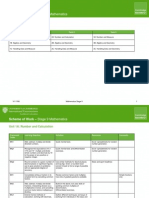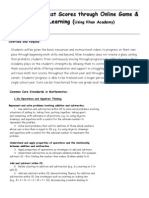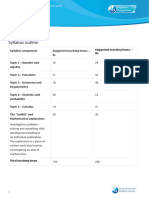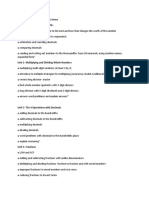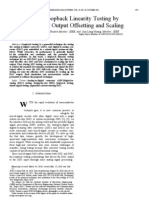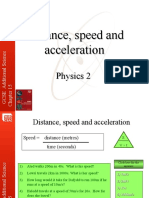Perse School Entrance Assessments
–
11+ Maths
Year 7 11+) Entrance Assessments Maths Syllabus
Perse 11+ Maths Paper:
Candidates are required to work one paper of 45 minutes duration. There is no choice of questions; candidates should answer as many questions as possible. Answers and working are to be shown on the question paper itself. Mathematical tables and calculators are not permitted. It is expected that candidates will have had some experience of investigative thinking; the examination will allow for the demonstration of such techniques. Puzzle and problem solving type questions will also be included. The test may also contain questions in which a new mathematical concept or rule is explained and examples given, before asking candidates to apply this new idea. No knowledge beyond this specification will be required.
Syllabus
The syllabus for the Year 7 examination will follow that for the national curriculum up to and including Year 5. In particular, the examination will test:
1.
Calculations using the four operators + , - , x , ÷ on positive integers and decimals (but not division by a decimal). The knowledge of the order of operations (BIDMAS) is
not
required.
2.
Odd and even numbers. Simple number patterns. Factors and multiples. Squares and cubes.
3.
Recognising and understanding simple fractions, decimals and percentages. Finding a fraction or percentage of a given quantity. Addition and subtraction of fractions (including mixed numbers) but not multiplication or division of fractions (problems will not involve brackets).
4.
Time - to include the 12-hour and 24-hour clock.
5.
Familiarity with the UK monetary system.
6.
Estimating sizes and quantities of familiar objects.
7.
Units of measurement and the relation between units. The following metric units will be used:



Perse School Entrance Assessments
–
11+ Maths Length - millimetre (mm), centimetre (cm), metre (m), kilometre (km) with corresponding units for area and volume. Mass - gram (g), kilogram (kg) Capacity - millilitre (ml), litre (l)
8.
Perimeter and area of a rectangle.
9.
Names for geometric shapes - plane figures only. Idea of a regular shape e.g. a regular hexagon.
10.
Line and rotational symmetry.
11.
Idea of angle - measurement of angle. Acute, obtuse and reflex angles. Parallel and perpendicular lines. Angle sum of a triangle.
12.
Extracting information from bar charts, pictograms and line graphs.
13.
Working with coordinates (positive coordinates only)
14.
Simple ideas on probability - probability scale.
15.
Calculation of average (mean).
16.
Concept of negative number.










